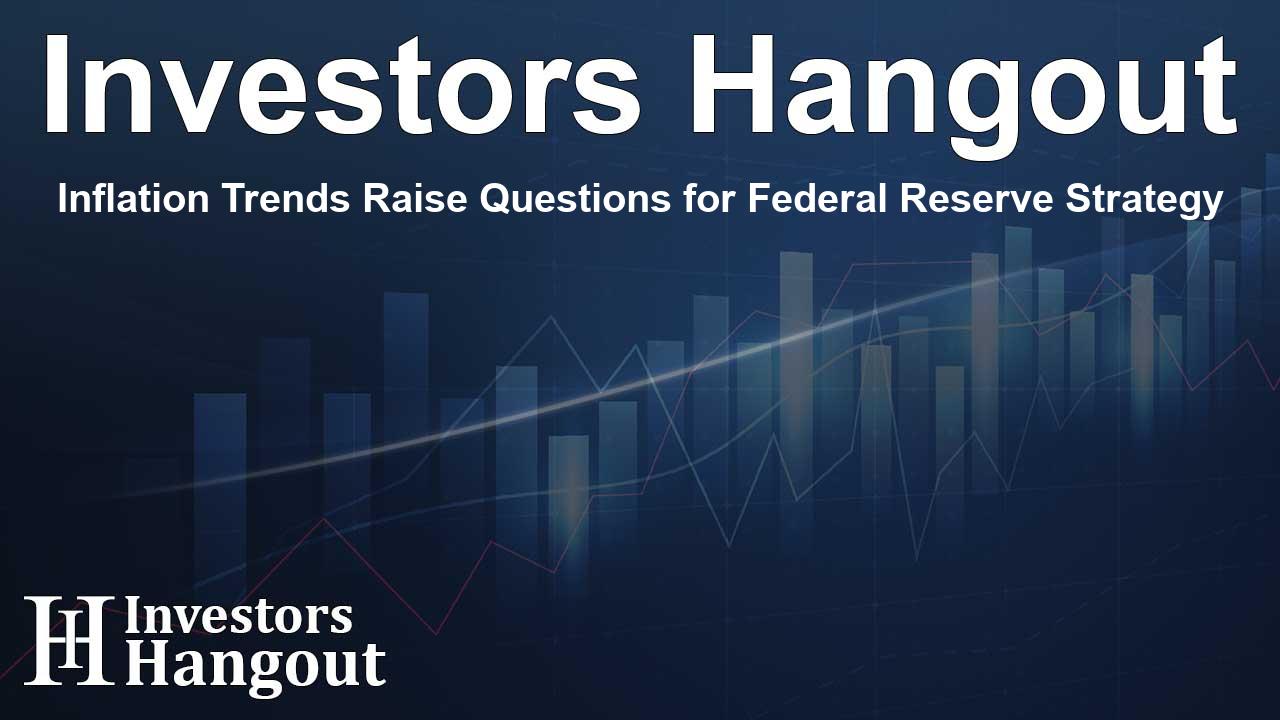Inflation Trends Raise Questions for Federal Reserve Strategy

Understanding Inflation and Its Impact on Policy Decisions
As discussions heat up ahead of the Federal Reserve's annual conference in Jackson, Wyoming, inflation remains a central topic. The interplay between economic indicators and consumer expectations adds complexity to the Fed's decision-making process regarding interest rates.
Latest Inflation Metrics Provide Mixed Signals
Recent reports on prices have presented a mix of signals for the Fed heading into its next meeting. Some analysts interpret the latest consumer price index (CPI) figures, which showed a steady rise of 2.7% year-over-year in July, as an indicator that current tariffs are moderately affecting prices. This could suggest a smoother path toward rate cuts, particularly as opinions coalesce around this expectation.
Core CPI Raises Concerns
However, skeptics point to core CPI, which excludes food and energy prices, indicating an uptick to a 3.1% annual pace, surpassing the Fed's target of 2.0%. This spike raises questions about the sustainability of the current inflation trajectory and whether the Fed should adopt a more cautious approach to rate adjustments.
The Implications of Sticky CPI Data
Another perspective comes from the Atlanta Fed's Sticky CPI index, which focuses on goods and services that experience infrequent price changes. This metric showed inflation moving upward, with a 3.4% increase over the past year, reinforcing concerns about ongoing inflationary pressures.
Wholesale Inflation Dynamics
A significant rise in wholesale inflation, marked by a 0.9% month-over-month increase—the largest jump in three years—further complicates the landscape. This increase in the Producer Price Index (PPI) points to strong underlying pricing pressures that could eventually be passed on to consumers.
Clark Geranen, chief market strategist at CalBay Investments, remarked, ‘The stronger-than-expected PPI suggests that businesses are absorbing much of the tariff costs for now, but this could change as they might soon pass these costs onto consumers.’
The Consumer Perspective on Inflation
Consumer inflation expectations have shifted, as indicated by recent survey data from the University of Michigan. A decline in the Consumer Sentiment Index in August reflects a growing concern about inflation—a shift that could influence consumer spending and broader economic activities.
The report emphasized, ‘This deterioration largely stems from rising worries about inflation.’
Labor Market Indicators Influence Fed Decisions
Concurrently, signs of weakness in the labor market emerge, with hiring increasing by a mere 73,000 in July. This lackluster job growth suggests potential issues in the economic outlook, presenting a dilemma for the Fed as it weighs the need for rate cuts against inflationary pressures.
Diverse Views Among Fed Policymakers
Different members of the Federal Reserve have expressed varying views on these challenges. For instance, Michelle Bowman, a Fed board member, indicated a need to concentrate on employment risks, while Austan Goolsbee, from the Chicago Federal Reserve, downplayed hiring weaknesses, attributing them partly to immigration policies rather than overall economic weakness.
Goolsbee noted, ‘The current unemployment rate of 4.2% shows that the job market remains solid despite the slowdown in job growth.'
Currently, markets anticipate a 1/4-point interest rate cut in the upcoming meeting, suggesting a prevailing narrative of a slowing economy. However, several key inflation and employment reports are due before the meeting, which could sway perceptions.
Final Thoughts Ahead of the Fed Meeting
The critical question remains: How will the Fed react if consumer inflation demonstrates continued upward pressure? As policymakers gather at Jackson Hole, the insights shared could provide valuable clues regarding their decision-making horizon.
Frequently Asked Questions
What are the main topics discussed regarding inflation?
The discussions focus on the implications of recent inflation metrics, including the consumer price index (CPI) and core CPI, and their effect on interest rate decisions.
Why is the core CPI important?
Core CPI is considered a more reliable indicator of inflation trends since it excludes volatile food and energy prices.
How does the Sticky CPI influence inflation expectations?
The Sticky CPI focuses on items with infrequent price changes, helping analysts gauge long-term inflation trends better.
What concerns do economists have regarding the labor market?
Weak job growth signals potential issues in the growth outlook, prompting debate over adjusting interest rates amidst inflation pressures.
How do Fed policymakers differ in their views on the economy?
Some focus on the risks related to employment while others view the current unemployment rate as evidence of a solid job market despite some weaknesses.
About The Author
Contact Dylan Bailey privately here. Or send an email with ATTN: Dylan Bailey as the subject to contact@investorshangout.com.
About Investors Hangout
Investors Hangout is a leading online stock forum for financial discussion and learning, offering a wide range of free tools and resources. It draws in traders of all levels, who exchange market knowledge, investigate trading tactics, and keep an eye on industry developments in real time. Featuring financial articles, stock message boards, quotes, charts, company profiles, and live news updates. Through cooperative learning and a wealth of informational resources, it helps users from novices creating their first portfolios to experts honing their techniques. Join Investors Hangout today: https://investorshangout.com/
The content of this article is based on factual, publicly available information and does not represent legal, financial, or investment advice. Investors Hangout does not offer financial advice, and the author is not a licensed financial advisor. Consult a qualified advisor before making any financial or investment decisions based on this article. This article should not be considered advice to purchase, sell, or hold any securities or other investments. If any of the material provided here is inaccurate, please contact us for corrections.
